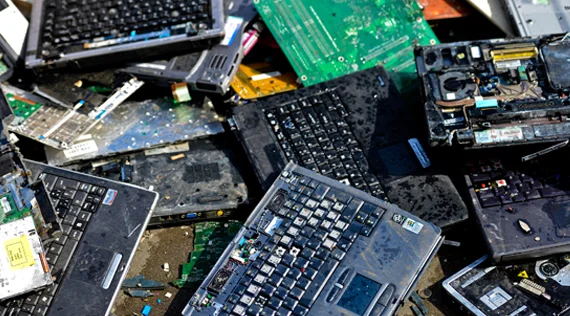
SEATTLE (Waste Advantage): In 2023, the amount of goods considered to be electronics and electric grew by 17.5 pounds per person according to the WEEE forum. This volume is only expected to continue to grow as we switch to renewable energy sources and increase our use of electricity and batteries to power our vehicles, gadgets, and home appliances. Electronics includes items like:
The list goes and on and on. On an annual basis, less than 25% of the electronic wastes that are generated are recycled. Moreover, increasingly many electronic devices are manufactured to be trashed as they are difficult if not impossible to recycle by design. A good example of this type of product is disposable vapes.
In 2008, Michigan passed a law that requires manufacturers of computers, computer monitors, televisions and printers to offer “takeback” recycling services to Michigan residents and small businesses. Laws like this, that hold manufacturers responsible for end-of-life product management, are called extended producer responsibility (EPR) laws. EPR laws generally focus on recycling devices that:
Michigan’s electronic waste takeback law is similar in scope to programs in nearby states — except we have no set return goals required of manufacturers. This allows them to simply collect the easy to find materials in metropolitan areas and not provide services to rural and underserved areas of the state.
The law worked well for several years if success is measured simply by the total number of pounds of material collected. At its peak in 2014, the program supported recycling of 29,200,00 pounds of covered electronic devices from the state. Today, that number has decreased to right around 10,000,000 pounds of covered devices recycled by the manufacturer programs.
Early in the program the rural areas of Michigan had little or no formal recycling services for electronics. Many communities had problems with scrappers that would collect items such as a CRT television, strip out the copper wire and circuit boards, then either pile up the remaining parts or dump them in the woods.
The then-Department of Environmental Quality — now the Michigan Department of Environment, Great Lakes, and Energy (EGLE) — addressed the lack of rural services by starting a grant program for the underserved areas of the state. On an annual basis, grantees with EGLE support now collects around 250,000 pounds of electronics through nine permanent collection centers and six to eight collection events that are held in the Upper Peninsula. The dumping of electronics has for the most part stopped, and no new stockpiles of unwanted electronics have been found in several years.
Those grants have recently been extended to support other underserved areas in the Lower Peninsula. During recent electronics recycling events in the Detroit area, a review of the materials collected showed that almost 40% of the material collected was not supported by a manufacturer takeback program. These materials were without a manufacturer takeback program because only manufacturers that continue to sell the covered electronic equipment in Michigan are required to provide services. Consequently, communities without manufacturer takeback services need to find funding to recycle these materials, whether it be local taxpayer funding or other philanthropists/donors.
Several states have expanded their EPR laws to include additional items, beyond computers, computer monitors, printers, and televisions, to be part of the recycling program. This reduces the cost to the community and taxpayers, keeps materials posing environmental threats out of our landfills, and brings valuable recovered materials back into production instead of wasting them and valuable landfill space.
Courtesy: www.wasteadvantage.com



| Copper Scrap View All | |
| Alternator | 0.38 (-0.01) |
| #1 Copper Bare Bright | 4.37 (-0.08) |
| Aluminum Scrap View All | |
| 356 Aluminum Wheels (Clean) | 0.79 (0) |
| 6061 Extrusions | 0.69 (0) |
| Steel Scrap View All | |
| #1 Bundle | 360.00 (0) |
| #1 Busheling | 380.00 (0) |
| Electronics Scrap View All | |